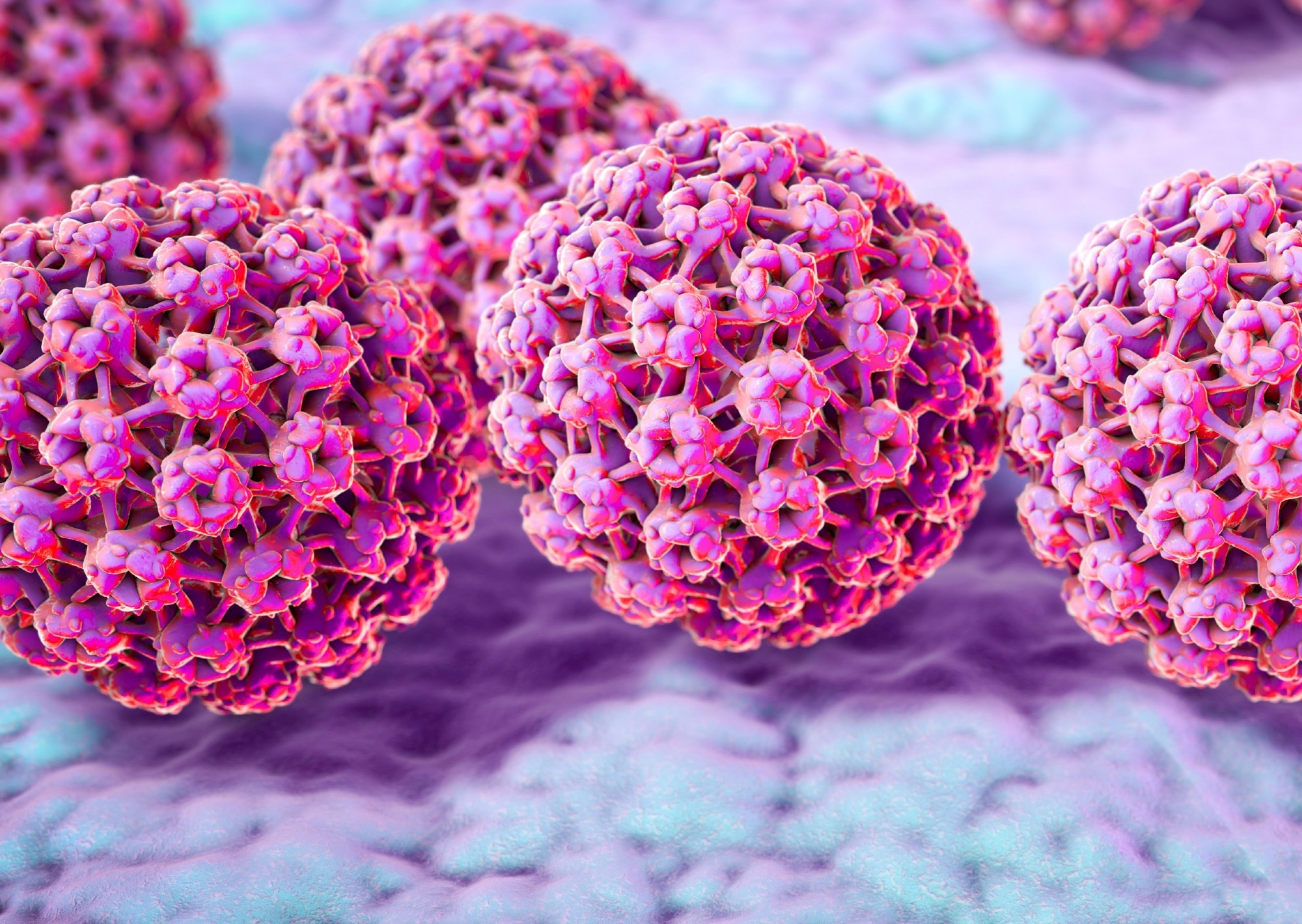In a recent study published in The Lancet Global Health, researchers conducted a systematic review and meta-analysis to understand the regional and global pooled, overall, and type and age-specific prevalence estimates of genital human papillomavirus infection in males.
 Study: Global and regional estimates of genital human papillomavirus prevalence among men: a systematic review and meta-analysis. Image Credit: Kateryna Kon / Shutterstock
Study: Global and regional estimates of genital human papillomavirus prevalence among men: a systematic review and meta-analysis. Image Credit: Kateryna Kon / Shutterstock
Background
Human papillomavirus is the most prevalent form of sexually transmitted infection, with most sexually active individuals experiencing at least one infection due to genital HPV during the course of their lives. There are over 200 types of sexually transmitted HPV, and of these, 12 are cancer-causing or oncogenic. While HPV infections are often asymptomatic, they are known to cause long-term morbidity and even mortality. In women, the oncogenic strains of HPV are linked to cervical cancer — one of the most prevalent forms of cancer in women.
In men, HPV infections often manifest as anogenital warts and contribute to increased infection transmission rates. The type 16 strain of HPV is also linked to anal, penile, and oropharyngeal cancers. However, while many epidemiological studies have examined the prevalence and consequences of HPV infections in women, the data on prevalence rates among men have been lacking. The few existing studies have focused on at-risk populations, such as men living with Human Immunodeficiency Virus (HIV) and men who have sex with men, and an updated estimate of the prevalence of genital HPV infection among males is necessary.
About the study
In the present study, the researchers conducted an updated estimation of the regional and global type and age-specific and overall prevalence of genital HPV deoxyribonucleic acid (DNA) among the general male population before the widespread implementation of the gender-neutral HPV vaccine. They carried out a systematic review of studies published between 1995 and 2022 that reported the prevalence of HPV infections among men above the age of 15, with no reported pathology related to HPV.
The included studies were also required to have conducted a polymerase chain reaction (PCR) or hybrid capture 2 to detect the HPV DNA from samples collected from anal or penile sites. Studies that focused solely on at-risk populations or circumcised men were excluded — the latter because circumcision is believed to act as a protective factor against HPV. Studies that only involved men vaccinated against HPV were also excluded, as were those that used semen or urine samples because these samples have low HPV detection sensitivity.
For the meta-analysis, only data on the mucosal α genus of HPV was extracted since the viral strains that cause anogenital warts in men and the major oncogenic types of HPV are present in this genus. The random-effects model was used during the meta-analysis to estimate the regional and global prevalence for any type of HPV, high-risk HPV, and individual types of HPV in an age-specific manner.
The United Nations Sustainable Development Goals and the income classifications according to the World Bank were used to calculate the regional pooled mean estimates for any individual and high-risk types of HPV. The heterogeneity between studies was also examined using sensitivity analyses.
Results
The findings reported that the prevalence of HPV was high among men older than 15 years of age, with one among every three men around the world having at least one incidence of genital HPV, while one among every five men globally has been infected with at least one type of high-risk HPV.
The study also showed that irrespective of age, sexually active men were a genital HPV infection reservoir, and it is imperative to include men in the worldwide strategies for HPV prevention to reduce HPV-associated morbidity in men and eventually eliminate HPV-related diseases such as cervical cancer.
Examination of the prevalence of individual HPV types revealed that type 16 was the most dominant one, followed by type 6. Furthermore, the age-specific analysis indicated that the prevalence of HPV was high in young adult men and continued to be high through adulthood. The prevalence was the highest among men between the ages of 25 and 29, after which it stabilized but remained high.
The implementation of the HPV vaccine among young women in various countries has begun to have an impact on reducing the prevalence of HPV infections due to specific genotypes. The three vaccine formulations that have currently been approved for clinical use are the two, four, and nine-valent types, and all of them target types 16 and 18 — the two high-risk types associated with cancer.
Furthermore, the regional pooled mean estimates indicated that the relative prevalence of HPV infections was lower among men and women in Asia, while HPV type 35 was consistently found to be prevalent among men and women in Sub-Saharan Africa.
Conclusions
Overall, the findings highlighted the need to include men in the comprehensive worldwide HPV vaccination strategies being implemented since the prevalence of HPV infections is high among men from young adulthood and all through adulthood. Irrespective of age, sexually active men experience significant HPV-infection-related morbidity and are a reservoir for the virus.
Journal reference:
- Bruni, L., Albero, G., Rowley, J., Alemany, L., Arbyn, M., Giuliano, A. R., Markowitz, L. E., Broutet, N., & Taylor, M. (2023). Global and regional estimates of genital human papillomavirus prevalence among men: a systematic review and meta-analysis. The Lancet Global Health, 11(9), e1345–e1362. https://doi.org/10.1016/S2214109X(23)003054, https://www.sciencedirect.com/science/article/pii/S2214109X23003054